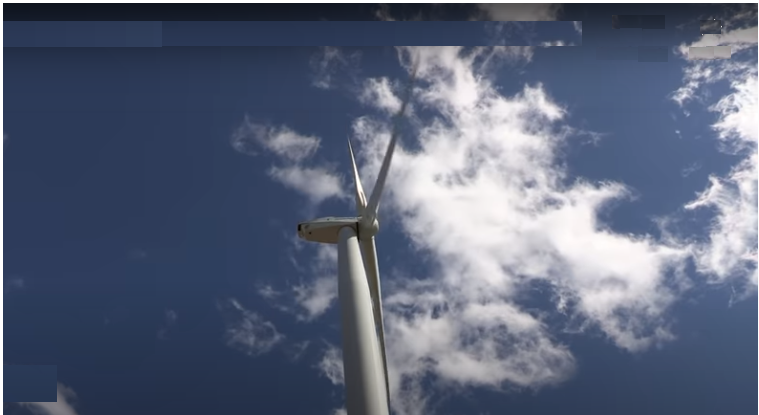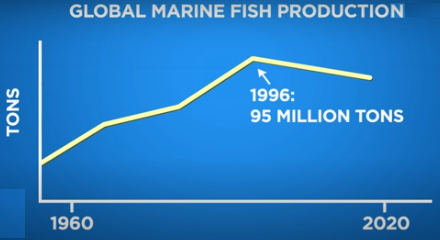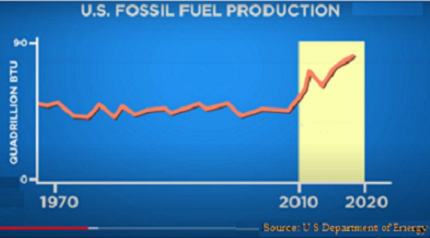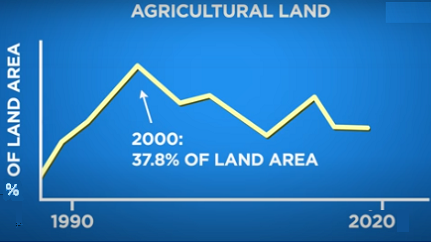Is green energy really free of fossil fuels, asks S.Ananthanarayanan.

Green energy is now an industry all over the world. The growth would appear to reflect the resolve of all countries to limit the use of fossil fuels and the harm they do to the environment.
Michael Francis Moore, American documentary film-maker, author and activist, in his 2019 film, Planet of the humans, presents a contrary view – that green energy depends on inputs that are just as harmful as the fossil fuel based energy that green energy seeks to replace. And more, that the interests that promote green energy are the ones that gain from the market for inputs that green energy creates.
Moore is an award winning producer and director, who has critically examined social and political questions, like presidential elections, the gun culture, , health care, globalisation, large corporations and capitalism overall, in the US. In 2005, Time magazine named Moore one of the world’s 100 most influential people. He says he was an early environmentalist – when he was ten years old, bulldozers started knocking down the woods near his home. He retaliated by pouring sand into the bulldozers’ gas tanks.

The documentary, Planet of humans, is about the environmental cost of the production of solar panels and wind farms, half-truths that are put out to justify their use, and the rising energy footprint despite all the investment in green energy, because the solutions are inadequate, in any case. The whole movement, he says, is a series of “desperate measures not to save a planet, but to save our way of life.” While there is talk of moves to block screening of the film, on 22nd April, Earth Day, Moore put the entire film for free viewing on the Internet, for a month.
The film starts with a solar festival in Vermont, ‘powered by 100% solar energy’. But the weather changed after the festival got underway, and Moore and his team found the festival had a ‘biodiesel generator’ back-up, and finally they had to plug into the state electric grid! That solar and wind power are intermittent, the film says, makes fossil or nuclear powered back-up inevitable. And if we power down these sources while the sun shines and the wind blows, this hits the efficiency of the plants, which puts us back where we started
The carbon footprint of producing the steel, and alumininium, concrete and fiberglass, that goes into building a wind farm, apart from the acreage that it uses up, eats into the value of the power it generates. And then, it needs to be maintained and replaced. And in the case of solar energy, it has been put out that the raw material for the solar cell is just sand, sand that we have in plenty. The trouble is that while the material is silicon, which is there in sand, for making solar cells, we need to use a much purer form of quartz. Quatrz contains silica, or the oxide of silicon, and it is reduced to the metal by getting carbon to take away the oxygen, to release CO2. And the process needs a furnace at 1,800°C, which we get by burning carbon! And in any case, the film says, even a huge solar farm has limited capacity. To provide for the 180,000 people of Lansing, in Michigan, the film says, we need a solar farm that is 3 miles wide and 5 miles long. A dangerous concept that is gaining currency, one of the commentators in the film says, is that alternative technology, like wind or solar, are somehow different from fossil fuels!
Alternate sources of energy, like hydrogen, all take energy, which comes from fossil fuels, to produce. Ethanol, from corn – is produced through a massive, fossil fuel based utility to produce corn – a case of using coal to replace the use of coal, the film says. We hear of coal based power plants being replaced by green facilities, but what we are not told is that another natural gas based plant with four times the capacity is also being built, the film says (the picture shows the rise in fossil fuel production in the US during 2010-20).
Richard Heinberg, author of The End of Growth (that we are at a turning point in humanity’s economic history), says he reviewed 25 alternative sources of energy that suggested we could ‘continue living the way we are, to perpetuity,’ but found it was not so. Richard York, of the University of Oregon, author of ‘Do alternative energy source displace fossil fuels?’, in the journal, Nature, says that while the answer is that they do not, replacing fossil fuels does not even appear to be the objective of green energy! “The position taken is that, yes, we are in an ecological hotspot, but there are technological fixes that can get us out,” says Nina Jablonsky of Penn State University. “But seeking technological fixes, one after another, is simply going to lead us to another level of catastrophe,” she says
The film shows dramatically the power hungry industries that green energy demands – mining and production of silicon, billions of tonnes of chemicals, silver, cobalt, graphite, coal, steel, nickel. Copper, concrete lithium, tin, gallium, arsenide, indium…. all involve energy guzzling mining methods, in places where power is generated in the most wasteful ways and putting vulnerable populations to risk. “We just want to believe there is a green solution to the energy problem and we can go on living the way we are,” the film says.
The film considers the technology of using desert land to set up solar farms. For one thing, the film notes that deserts are not really deserts, they too harbor important life and ancient vegetation. All of this would be lost to solar farms. And then, the farms are not permanent, they need to be renewed, they would be abandoned. Moore sees the possibility of huge land being destroyed. In the ocean, Moore sees that we have pushed exploitation of fish resources to the limit. We reached the limit of fishing in 1996, the film says as shown in the picture. And again, when it comes to agricultural land, we have reached the peak of what is available. The groundwater in most parts of the world is likely to run out in a decade and the rivers have been exploited to what they can sustain.



The film is a grim picture of where the world may be headed.
------------------------------------------------------------------------------------------ Do respond to : response@simplescience.in-------------------------------------------